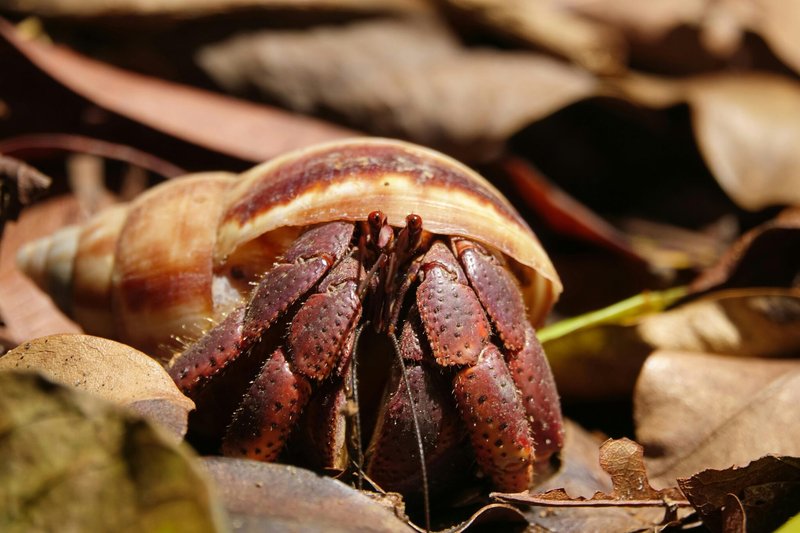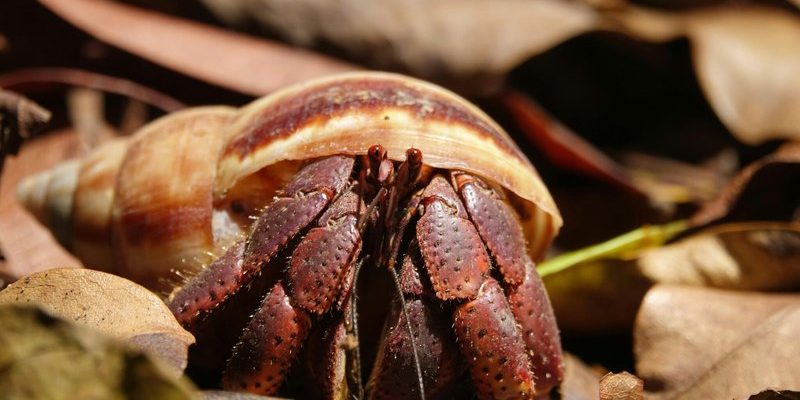
Hermit crabs aren’t actually crabs in the traditional sense. They’ve got a unique lifestyle that revolves around finding and switching shells as they grow. This shell-swapping ritual makes them fascinating pets too. Whether you’re a shell collector or just curious about these tiny crustaceans, let’s dive into some amazing facts about hermit crabs that will make you appreciate them even more.
1. They’re Actually More Closely Related to Lobsters
It might surprise you to learn that hermit crabs are *not* true crabs at all. Instead, they belong to the order Decapoda, which includes lobsters and shrimp. So, in a way, hermit crabs are like the quirky cousins of the seafood party. They share many anatomical features with their lobster relatives, including their soft, curled abdomen, which they protect by living in a shell.
Their external shell helps keep them safe from predators and environmental factors. When you think about it, it’s kind of like how we use a home for shelter. If you were a tiny hermit crab in a big ocean, wouldn’t you want a nice shell to hide in too?
2. Shell Switching: A Hermit Crab’s Unique Habit
Here’s the thing about hermit crabs: they *love* to switch shells. Growing up is a little different for them than it is for us. As they mature, these little guys need larger shells to accommodate their growing bodies. When they find a shell that fits just right, they’ll wiggle inside and make it their home.
This shell-switching habit isn’t just a solo adventure. Hermit crabs often participate in a kind of “shell exchange party.” It can be quite the scene! When one crab finds a bigger shell, others might line up to take its old one. It’s almost like a real estate market for crabs!
3. They Have a Variety of Shell Choices
You might think that hermit crabs are picky about their homes, but they actually have many options. In the wild, they can be found in various shells, including those of *gastropods*, like turbo snails. Some even prefer to live in discarded plastic shells. This adaptability helps them survive in different environments.
Let’s say you’re shopping for a new laptop—some people prefer a sleek MacBook, while others might opt for a rugged PC. Similarly, hermit crabs have preferences, which can change based on their size and comfort. It’s interesting to think about how their choice of shell affects their lifestyle, isn’t it?
4. Hermit Crabs Can Live a Long Time
Many people are surprised to learn that hermit crabs can live for 10 years or more! Some have been known to live upwards of 30 years in captivity. It’s like having a little friend who sticks around for the long haul. However, their lifespan can vary significantly based on care.
If you’re thinking of bringing a hermit crab into your home, it’s essential to create a suitable environment. A spacious tank with the right humidity and temperature can make a world of difference. If you treat them well, you might enjoy many years of companionship!
5. They Are Social Creatures
You might picture them as loners, but hermit crabs are social animals. They often live in groups, bonding with others of their kind. Watching a group of hermit crabs interact can be quite entertaining. They communicate through sounds like chirps and drumming, which give off little vibrations.
If you’ve ever seen a group of friends gathered for a game night, it’s somewhat similar to how hermit crabs enjoy each other’s company. They can get along just fine, but they also know when to look for that perfect shell to claim for themselves!
6. They Breathe Through Gills
You might think of hermit crabs as little land dwellers, but they actually need moisture to breathe properly. Their gills must stay wet to function, which means they can’t completely stray far from water. In the wild, they often live near the ocean or in humid environments.
That’s why if you have a hermit crab as a pet, maintaining the right humidity level in its tank is crucial. It’s like ensuring a plant has enough water to thrive. Without the right conditions, your little friend may struggle to breathe.
7. A Unique Diet to Support Their Lifestyle
What do you feed a hermit crab? Well, they are omnivores! In the wild, they munch on a variety of foods, ranging from fruits and vegetables to detritus (decaying organic matter). Think of it as their natural buffet!
If you have a hermit crab at home, you can feed it commercial crab food or even safe fruits and veggies from your kitchen. Just remember to offer a mix of different foods to keep their diet balanced. After all, we all need a little variety to stay healthy!
8. They Have Powerful Claws
Despite being small, hermit crabs come equipped with powerful claws. They use these claws for various tasks, including climbing, digging, and defending themselves. Interestingly, their larger claw is often used for protection, while the smaller one helps them eat.
Picture a superhero with a strong arm and a trusty sidekick. The larger claw is like a shield, while the smaller one performs all the delicate tasks. These adaptations are crucial for their survival in the wild, allowing them to navigate their world efficiently.
9. They Shed Their Exoskeletons
Like lobsters, hermit crabs have a tough outer shell that must be shed as they grow. This process is called molting. When they molt, they can temporarily become vulnerable, so they often find a safe spot to hide during this time.
If you ever notice your hermit crab being less active or disappearing for a bit, it might be going through a molting phase. It’s a natural part of their growth, but it can be a bit unsettling for new owners who aren’t familiar with the process. Just remember, it’s all part of their life cycle!
10. They’re Fascinating Pets
Hermit crabs make great pets for those who appreciate their unique characteristics. They’re low-maintenance compared to many other pets, yet they still offer plenty of personality. Watching them scuttle around and interact can be delightful and even educational.
So, if you’re considering adding a little hermit crab to your life, don’t hesitate! These little guys might just become your new best friend, offering endless fascinating moments to enjoy.
In conclusion, hermit crabs are more than just little critters hiding in shells. They’re complex, social beings with a rich life history. With their unique habits and charming personalities, it’s no wonder they capture the hearts of so many. Whether you’re thinking about getting one or just appreciating them from afar, knowing these fun facts opens up a whole new world of admiration for these incredible little creatures. Enjoy exploring their fascinating lives!

